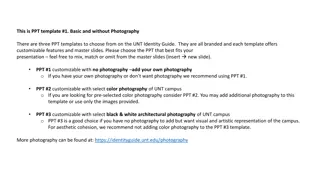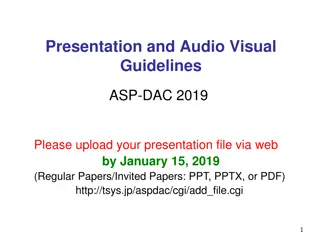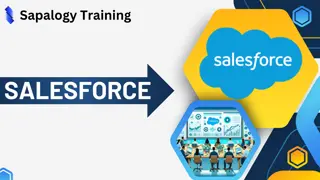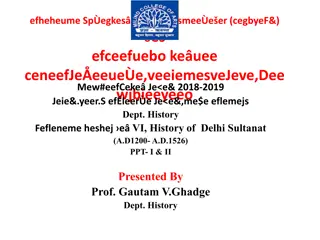
Understanding Group Influence and Collective Behavior
Explore the concept of groups, their influence on individuals, and examples of collective behavior such as social facilitation, social loafing, and deindividuation. Learn how the presence of others can impact performance and behavior in both humans and animals. Discover how group dynamics affect tasks and behaviors, with insights from studies on social psychology and group interactions.
Download Presentation

Please find below an Image/Link to download the presentation.
The content on the website is provided AS IS for your information and personal use only. It may not be sold, licensed, or shared on other websites without obtaining consent from the author. Download presentation by click this link. If you encounter any issues during the download, it is possible that the publisher has removed the file from their server.
E N D
Presentation Transcript
What is a Group? ? Exist when two or more people interact for more than a few moments, affect one another in some way, and think of themselves as us .
Different groups help us meet different human needs ? Affiliate to belong to and connect with others. ? Achieve to gain social identity.
3 examples of Collective Influence ? Social facilitation ? Social loafing ? Deindividuation ? These threephenomena can occur in Minimal interaction Minimal GroupSituations
Social Facilitation: How are we affected by the presence of others? ? The tendency of people to perform simple or well- learned tasks better when others are present. Example: Do youride faster when bicyclingwith others?
One of Norman Tripletts study (1898) ? He noticed that in bicycle racing,people were faster when the they raced together than each one raced alone against the clock. Before he puddled his hunch, The Other people s presence boosts his performance. ? The bodily presence of another contestant . . . Serves to liberate latentenergy
? Co-actors are people who are not competing, do not reward or punish, and in fact do nothing except be present as a passive audience.
Social Facilitation also occurs in animals ? By the presence of other species, Ants excavatemore sand, chicken eat more grain etc.
? But Other studies revealed that on some tasks the presence of others HINDERS their performance.
? Increased arousal enhances performances on easy tasks for which the most likely Dominant response is correct. Example: ? People solve easy anagrams, fastest when aroused.
? But on complex tasks, for which the correct answer is NOT DOMINANT. Increased arousal promotesIncorrect responding. Example; Problem-solving, abstract reasoning, Mathematical computations.
Could this principle solve the mystery of Social Facilitation? ? To assume that others presence will arouse or energize people
? But most of us can recall feeling tense in front of an audience.
Example: James Michaels study (1973) ? Good pool players in a student union made 71% of their shots while No one is observing. ? But when the four observers came up, most of them fail and they only made 25% of their shots.
? Social Arousal facilitates dominant responses and boost performance on easy tasks and hurt performance on difficult tasks, when other people are present
Crowding: The presence of many others ? Doesthe presence of observers always arouse people? ? In some cases, with others present people: ? Perspire more ? Breathe faster ? And have higherbloodpressure
Example: ? Speaking in a large group of people or in a crowd increases arousal and self-conscious attention. Extreme pressure caused Choking .
Why are we aroused in the presence of others? ? What is about other people that creates arousal? ? Evidence supports three possible factors
1. Evaluation Apprehension ? Is the concern of how others are evaluating us.
Nickolas Cottrell study (1968) ? The enhancement of dominant responses is strongest when people think they are being evaluated
2. Driven by Distraction ? When we wonder how our co-actors are doing or how an audience is reacting, we become distracted. (Sanders, Baron& Moore, 1986)
3. Mere Presence ? Zajonc, believe that the mere presence of others produces some arousal even without evaluation apprehensionor arousing distraction.
Social Loafing:Do individuals exert less effort in a group? ? The tendencyfor people to exert less effort when they pool their efforts toward a commongoal than when they are individually accountable. ? Example: ? In a team of tug of war,will eight peopleon a side exert as much force as the sum of their best efforts in individual tug of war?
Manyhands make light work ? In unity there is strength ? Group members may be actually less motivated when performing additive task.
Massachusetts & Ingham (1974) ? In the game tug of war, they make individuals think others were pulling with them, when in fact they were pulling alone. Blindfolded participants were assigned on the first position in the apparatus and told Pull as hard as you can , the participants thought that there are four to five people behind them, but honestly there is no one.
? Free riders people who benefit from the group but give little in return. ? People exert effort when their outputsare individually identifiable ? When being observed it increases evaluation concerns = Social Facilitation ? When being lost in a crowd it decreases evaluation concern= Social Loafing
? People may, however, put forth even more effort in a group when the goal is important, rewards are significant, and team spirit exists


















